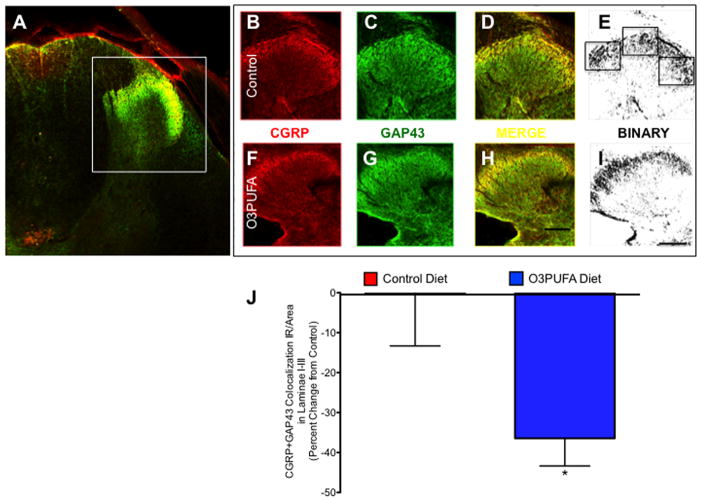Figure 9.
Dietary O3PUFA-pretreatment reduces nociceptive fiber sprouting following chronic SCI. (A) Double labeled spinal cord section showing calcitonin gene-related peptide (CGRP) and growth-associated protein 43 (GAP43) immunoreactivity (IR) in spinal cord. Confocal photomicrographs showing CGRP (B) and GAP43 (C) immunoreactivity in control chow-fed rat. Images were merged to quantify the immunoreactivity of CGRP-containing sprouting afferent fibers (D). Optical density was most intense in laminae I to III of the dorsal horns. Sections were morphometrically analyzed using stereological methods after thresholding binary images using ImageJ software (E). Representative image from CGRP (F) and GAP43 (G) immunoreactivity in an animal fed O3PUFA-enriched diets. Merged (H) and binary (I) images depict CGRP-containing GAP43+ fibers in the dorsal horn (H). Boxes represent areas showing colocalization. Scale bar = 100 μm. (I) Results from quantification of binary particle counts of dorsal horn superficial laminae. Analysis showed that O3PUFA-enriched diet significantly reduced the colocalization of GAP43 and CGRP, suggesting a reduction in nociceptive fiber sprouting. Bars represent means ± standard error of the mean; Mann Whitney U test *p < 0.05, n = at least 4 rats.

